IELTS Writing Task 1 Bar Chart: Candy Consumption
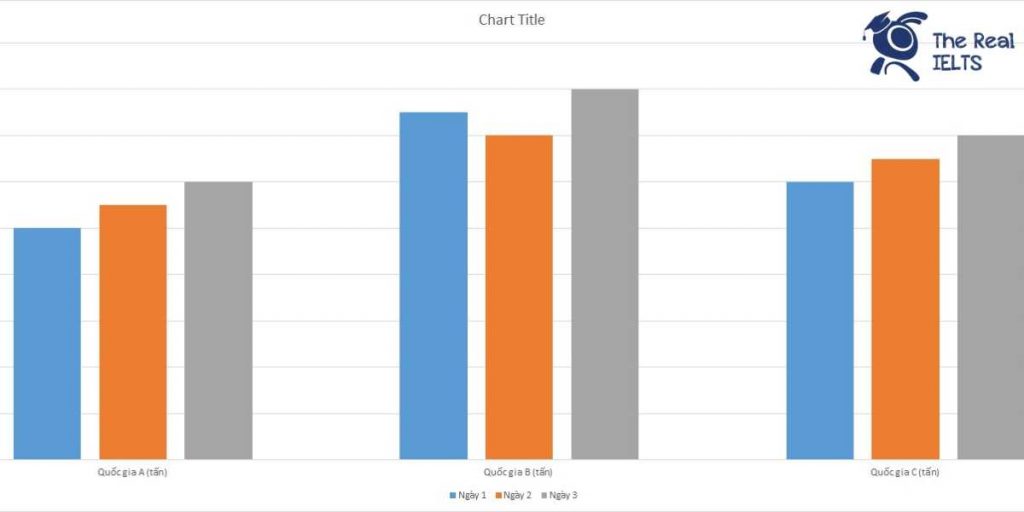

IELTS Writing Task 1 yêu cầu bạn mô tả biểu đồ cột thể hiện lượng tiêu thụ bánh kẹo trong 3 ngày của 3 quốc gia khác nhau.
IELTS Writing Task 1 Bar Chart: Applications
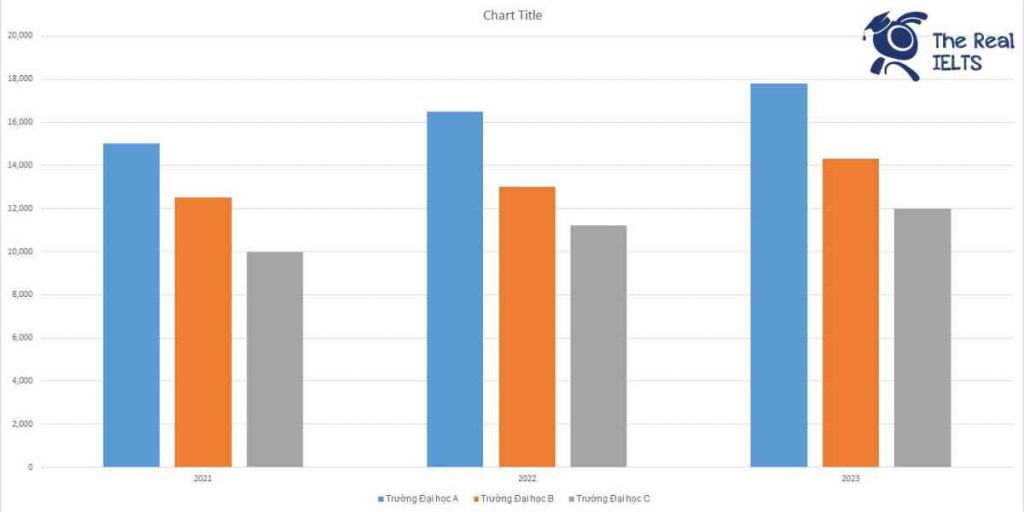

IELTS Writing Task 1 yêu cầu bạn mô tả một biểu đồ Bar Chart về số lượng đơn xin nhập học trong 3 năm của ba trường đại học.
IELTS Writing Task 1 Bar Chart: Customers Participating
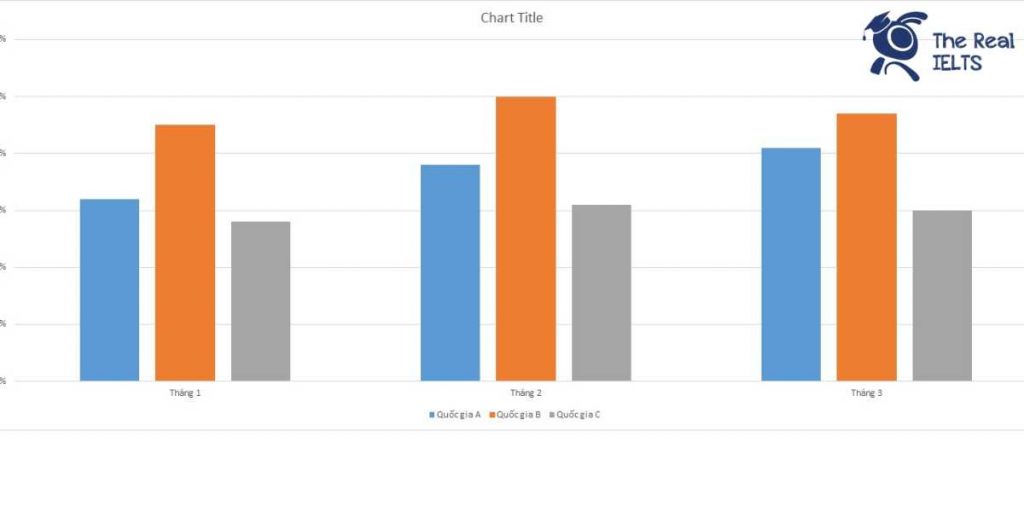

IELTS Writing Task 1 Bar Chart: Customers Participating biểu đồ cột dưới đây so sánh số lượng khách hàng tham gia khuyến mãi của ba công ty trong ba tháng khác nhau. Biểu đồ thể hiện rõ sự biến động trong mức độ tham gia của mỗi công ty qua các tháng, giúp nhận diện xu hướng và hiệu quả của các chương trình khuyến mãi. Đọc bài này Cách làm bài IELTS Writing Task 1 Bar Chart trước khi làm bài. Bạn cũng có thể đọc lại bài nói về Task 1 tại đây: IELTS Writing Task 1 cần lưu ý những gì? Đọc thêm về xây dựng lộ trình học IELTS của The Real IELTS. IELTS Writing Task 1 Bar Chart: Customers Participating You should spent about 20 mintutes on this task The bar chart below compares the number of customers participating in promotions for three different companies over three months. The chart clearly shows the fluctuations in participation levels for each company across the months, helping to identify trends and the effectiveness of the promotional programs. You should write at least 150 words. Tháng Công ty A Công ty B Công ty C Tháng 1 1200,000 1500,000 1300,000 Tháng 2 1100,000 1600,000 1400,000 Tháng 3 1300,000 1700,000 1500,000 IELTS Writing 1 Overview The statistical table illustrates the number of customers participating in promotions for three companies—A, B, and C—across three different months. This hypothetical data provides insight into customer engagement and promotional effectiveness for these companies over the first quarter of the year. Body 1 In January, Company B attracted the highest number of customers with 1500 participants, followed by Company C with 1300, and Company A with 1200. This initial month shows Company B leading the promotional engagement. The figures suggest that Company B’s promotional strategies were particularly effective at the start of the year, drawing in a substantial number of customers. Body 2 February saw a shift in numbers, with Company B still in the lead but increasing their customer base to 1600. Company C also saw an increase to 1400 customers, while Company A experienced a slight decline, dropping to 1100. This month indicates a growing trend for Companies B and C, while Company A faced a minor setback. In March, all companies saw an increase in customer participation, with Company B reaching 1700, Company C 1500, and Company A 1300. This final month of the quarter highlights an overall positive trend in customer engagement, with all companies benefiting from increased participation in their promotional activities. IELTS Writing 2 Overview This report provides an analysis of the number of customers participating in promotional activities of three companies over three months. The data is categorized by month and company, showing trends and changes in customer engagement. This analysis helps understand the effectiveness of promotional strategies for Company A, Company B, and Company C. Body 1 In January, Company A attracted 1200 customers, Company B had 1500 customers, and Company C saw participation from 1300 customers. Company B led the month with the highest customer engagement, indicating a successful promotional campaign. Company C followed, while Company A had the lowest participation among the three. These figures suggest that while all companies had a considerable number of participants, Company B’s strategy was the most effective for January. Body 2 In February, the number of customers for Company A decreased to 1100, while Company B’s customer count increased to 1600, and Company C’s participation rose to 1400. Company B continued to lead, showing a consistent improvement in attracting customers. Company C also saw an increase in participation, surpassing the figures from January. Company A, however, experienced a decline, indicating potential issues with their promotional approach or competition from the other two companies. In March, there was a noticeable increase in customer participation across all companies. Company A had 1300 customers, Company B reached 1700, and Company C saw 1500 participants. Company B maintained its leading position, while Company C followed closely. Company A rebounded from February’s decline, achieving higher engagement than in January. This upward trend in March suggests that promotional efforts across all companies were more effective or that market conditions improved, encouraging greater customer participation.
IELTS Writing Task 1 Bar Chart: Frozen Food
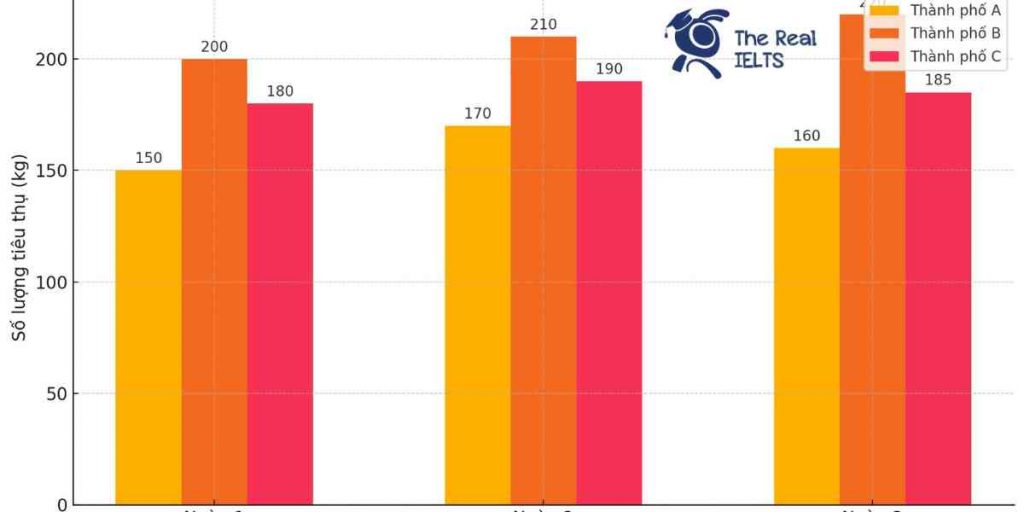

IELTS Writing Task 1 yêu cầu mô tả lượng tiêu thụ thực phẩm đông lạnh trong 3 ngày của ba thành phố qua biểu đồ cột. Biểu đồ này minh họa số liệu cụ thể về lượng thực phẩm tiêu thụ, giúp người viết so sánh và phân tích xu hướng tiêu dùng giữa các thành phố. Bài viết cần chú trọng vào việc miêu tả số liệu chính xác, nêu rõ sự khác biệt và điểm tương đồng giữa các thành phố trong khoảng thời gian được đề cập. Đọc bài này Cách làm bài IELTS Writing Task 1 Bar Chart trước khi làm bài. Bạn cũng có thể đọc lại bài nói về Task 1 tại đây: IELTS Writing Task 1 cần lưu ý những gì? Đọc thêm về xây dựng lộ trình học IELTS của The Real IELTS. IELTS Writing Task 1 Bar Chart: Frozen Food You should spent about 20 mintutes on this task IELTS Writing Task 1 requires describing the consumption of frozen food over three days in three cities through a bar chart. This chart illustrates specific data on food consumption, helping the writer compare and analyze consumption trends between the cities. The essay should focus on accurately describing the figures, highlighting the differences and similarities between the cities over the specified period. You should write at least 150 words. Thành phố Ngày 1 Ngày 2 Ngày 3 Thành phố A 150 170 160 Thành phố B 200 210 220 Thành phố C 180 190 185 Bài mẫu 1 Overview The consumption of frozen food over three days was recorded for three cities: Thành phố A, Thành phố B, and Thành phố C. This data provides insight into the trends and fluctuations in frozen food usage across different urban areas. By analyzing the consumption patterns, we can better understand the demand for frozen food products in these cities. Body 1: In Thành phố A, the consumption of frozen food showed some variation over the three days. On Ngày 1, the city consumed 150 kg of frozen food. This amount increased to 170 kg on Ngày 2, indicating a rise in demand. However, on Ngày 3, the consumption slightly decreased to 160 kg. This fluctuation suggests that while there was an increase in demand on the second day, it did not sustain into the third day. Body 2: Thành phố B demonstrated a steady increase in frozen food consumption over the three days. Starting at 200 kg on Ngày 1, the consumption rose to 210 kg on Ngày 2 and further to 220 kg on Ngày 3. This consistent upward trend indicates a growing demand for frozen food in Thành phố B. Similarly, Thành phố C also showed an increase in consumption from Ngày 1 to Ngày 2, with figures rising from 180 kg to 190 kg. However, unlike Thành phố B, Thành phố C experienced a slight decrease on Ngày 3, with consumption dropping to 185 kg. This pattern suggests a peak in demand on the second day followed by a minor decline. Bar Chart Representation To visually represent the data, a bar chart can be used. Each city will have three bars corresponding to the three days. The x-axis will represent the days, while the y-axis will denote the amount of frozen food consumed in kilograms. This graphical representation will make it easier to compare the consumption patterns across the three cities over the three days. Bài mẫu 2 Overview The data provided outlines the consumption of frozen foods in three cities—City A, City B, and City C—over a span of three days. The units of measurement are in kilograms (kg). This report will analyze the trends in frozen food consumption, comparing the daily usage across the three cities and identifying patterns or significant changes in consumption levels. Body 1 In City A, the consumption of frozen foods began at 150 kg on the first day. On the second day, there was a noticeable increase to 170 kg, indicating a 13.3% rise in consumption. However, on the third day, the consumption slightly decreased to 160 kg, representing a 5.9% drop from the previous day. This fluctuation might suggest a variability in demand or supply factors influencing daily consumption. City B, on the other hand, showed a consistent increase in the consumption of frozen foods over the three days. Starting at 200 kg on the first day, the amount rose to 210 kg on the second day, marking a 5% increase. This trend continued into the third day with the consumption reaching 220 kg, another 4.8% increase. The steady rise in City B could be indicative of growing demand or a response to supply chain efficiencies or marketing efforts. Body 2 City C’s data also indicates a gradual increase in frozen food consumption but with less variability compared to City A and B. The initial consumption was recorded at 180 kg on the first day. It rose to 190 kg on the second day, reflecting a 5.6% increase, and slightly decreased to 185 kg on the third day, a 2.6% drop. The minor fluctuations in City C suggest a relatively stable consumption pattern, possibly influenced by consistent consumer behavior or stable market conditions. Overall, City B showed the highest levels of consumption each day, followed by City C and City A. The consistent increase in City B might point to a larger population or more significant marketing efforts for frozen foods. Meanwhile, the fluctuations in City A and the stability in City C highlight different consumption dynamics that could be influenced by various external factors such as pricing, availability, or cultural preferences.
IELTS Writing Task 1 Bar Chart: Cosmetics
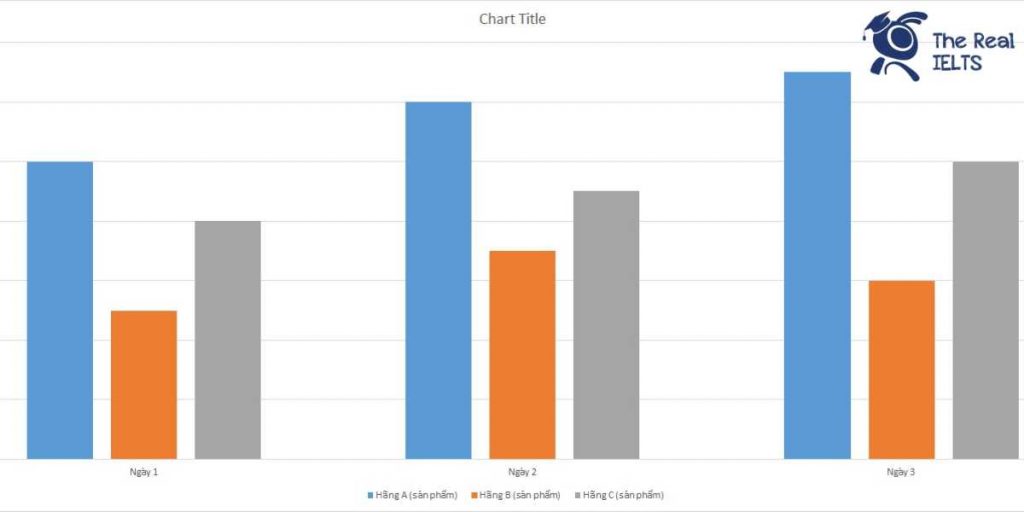

IELTS Writing Task 1 yêu cầu bạn phân tích và mô tả biểu đồ, dữ liệu hoặc sơ đồ đã cho. Trong trường hợp này, bạn sẽ phân tích lượng tiêu thụ mỹ phẩm trong ba ngày của ba hãng mỹ phẩm khác nhau.
IELTS Writing Task 1 Bar Chart: Rental Costs
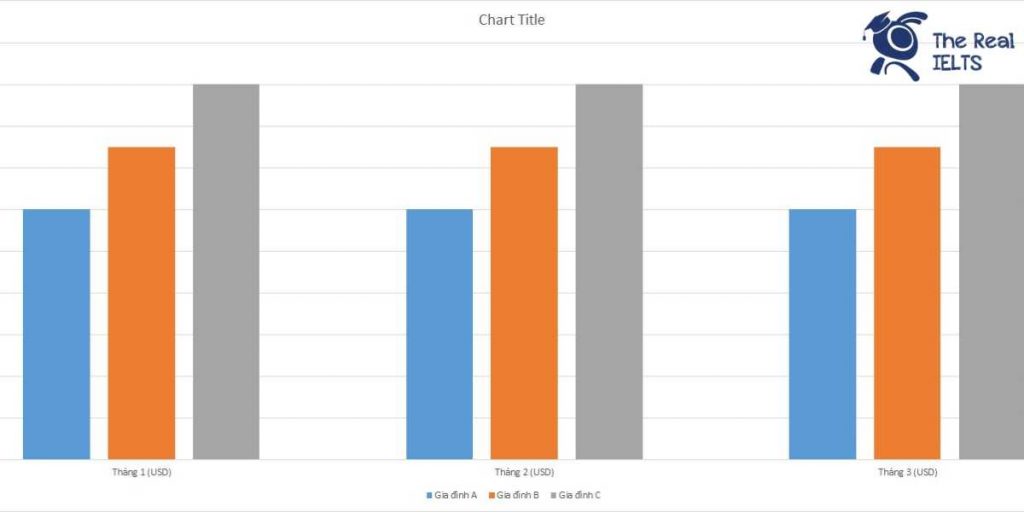

IELTS Writing Task 1 yêu cầu bạn mô tả biểu đồ Bar Chart về chi phí thuê nhà trong 3 tháng của ba gia đình.
IELTS Writing Task 2 dạng Agree or Disagree Part 2
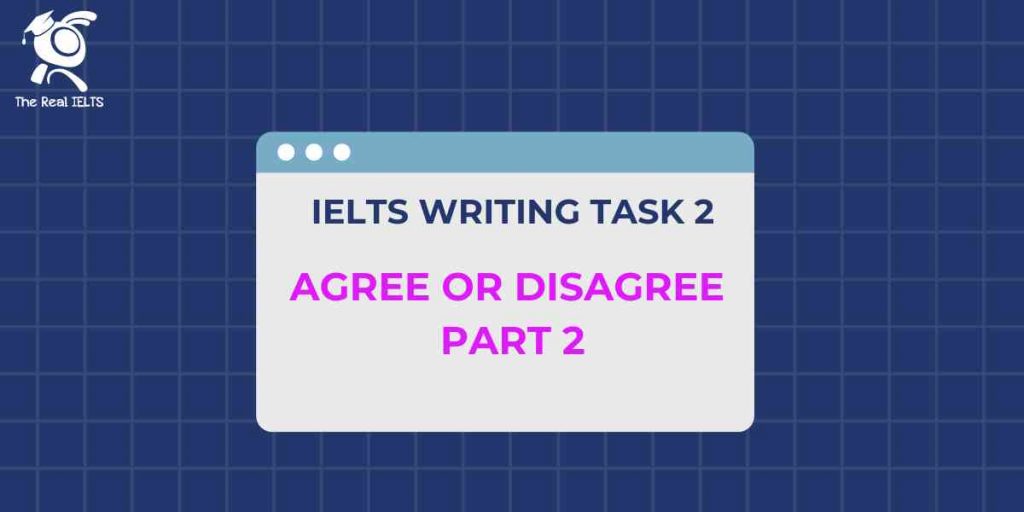

Đề bài IELTS Writing Task 2 dạng Agree or Disagree Part 2:
IELTS Writing Task 1 Bar Chart: Telecommunications
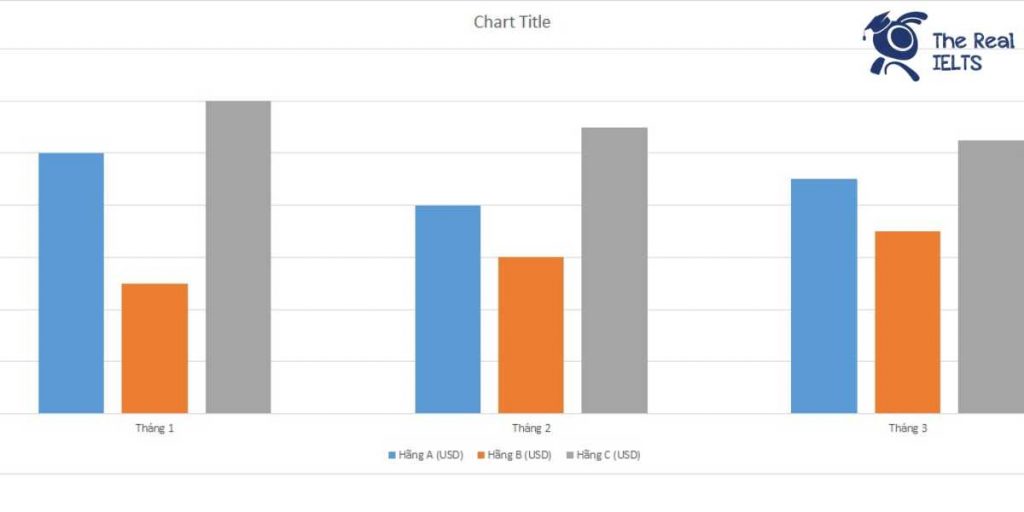

IELTS Writing Task 1 yêu cầu thí sinh mô tả biểu đồ cột (Bar Chart) về chi phí dịch vụ viễn thông của ba hãng khác nhau trong ba tháng. Thí sinh cần phân tích sự biến động chi phí, so sánh sự khác biệt giữa các hãng và xu hướng trong khoảng thời gian này. Bài viết nên bao gồm các thông tin chính xác, cụ thể và sử dụng ngôn ngữ rõ ràng, súc tích để đạt điểm cao. Đọc bài này Cách làm bài IELTS Writing Task 1 Bar Chart trước khi làm bài. Bạn cũng có thể đọc lại bài nói về Task 1 tại đây: IELTS Writing Task 1 cần lưu ý những gì? Đọc thêm về xây dựng lộ trình học IELTS của The Real IELTS. IELTS Writing Task 1 Bar Chart: Telecommunications You should spent about 20 mintutes on this task IELTS Writing Task 1 requires candidates to describe a bar chart depicting the telecommunications service costs of three different companies over three months. Candidates need to analyze the fluctuations in costs, compare the differences between the companies, and identify trends over this period. The essay should include accurate, specific information and use clear, concise language to achieve a high score. You should write at least 150 words. Tháng Hãng A (USD) Hãng B (USD) Hãng C (USD) Tháng 1 50,000 45,000 52,000 Tháng 2 48,000 46,000 51,000 Tháng 3 49,000 47,000 50,500 Bài mẫu 1 Overview The table provides an analysis of telecommunication service costs for three different companies—Company A, Company B, and Company C—over three months. The data, represented in USD, highlights the monthly expenses incurred by each company from January to March. This overview offers insights into the cost trends and allows for a comparative analysis of each company’s expenditure over the specified period. Body 1: Monthly Cost Analysis In January, Company A had the highest expenditure at $50,000, followed closely by Company C at $52,000, and Company B at $45,000. This initial month shows a significant variance in costs among the three companies, with Company B being the most economical choice. Moving into February, the costs for Company A decreased slightly to $48,000, while Company B experienced a minor increase to $46,000. Company C also saw a reduction, bringing its costs down to $51,000. Despite these changes, Company B continued to maintain the lowest expenditure among the three. Body 2: Overall Trends and Comparisons March saw a further convergence in costs, with Company A’s expenses rising to $49,000 and Company B’s to $47,000. Company C, on the other hand, reduced its costs to $50,500. This month marked the smallest difference in costs between the three companies, indicating a trend towards cost optimization across the board. Over the three months, Company B consistently maintained the lowest costs, making it the most cost-effective provider. Company A’s costs showed a slight downward trend, while Company C demonstrated the most fluctuation. Overall, the data suggests a competitive landscape where each company is striving to manage and reduce their telecommunications expenses effectively. Bài mẫu 2 Overview The table presents the monthly telecommunications service costs for three different companies (Company A, Company B, and Company C) over a three-month period. The data highlights the variations in costs among the companies from January to March. Body 1 In January, Company A had the highest service cost at $50,000, followed closely by Company C at $52,000, and Company B at $45,000. This initial month shows a noticeable disparity among the companies, with Company C leading in expenditures and Company B having the lowest cost. In February, the costs for all companies showed slight changes. Company A’s expenses decreased to $48,000, while Company B saw a small increase to $46,000. Company C experienced a slight reduction in cost to $51,000. Despite these changes, Company C remained the highest spender, with Company B still having the lowest cost among the three. Body 2 March saw further adjustments in telecommunications costs. Company A’s costs increased marginally to $49,000. Company B continued its upward trend with costs rising to $47,000. Meanwhile, Company C’s expenses dropped to $50,500. Although Company C maintained the highest costs overall, the gap between the companies’ expenses narrowed over the three months, showing a trend towards more similar expenditure levels. In summary, over the three months, Company C consistently had the highest telecommunications service costs, while Company B had the lowest. Company A’s costs fluctuated slightly but remained intermediate compared to the other two companies. The data indicates a gradual convergence in service costs among the three companies by the end of the period.
IELTS Writing Task 2 dạng Agree or Disagree Part 1
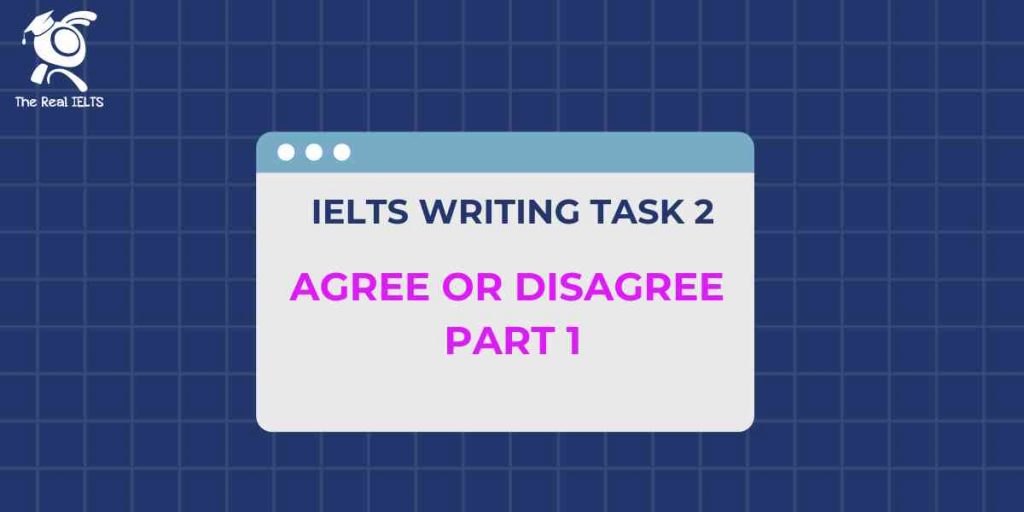

Đề bài IELTS Writing Task 2 dạng Agree or Disagree Part 1
IELTS Writing Task 1 Bar Chart: Consumption
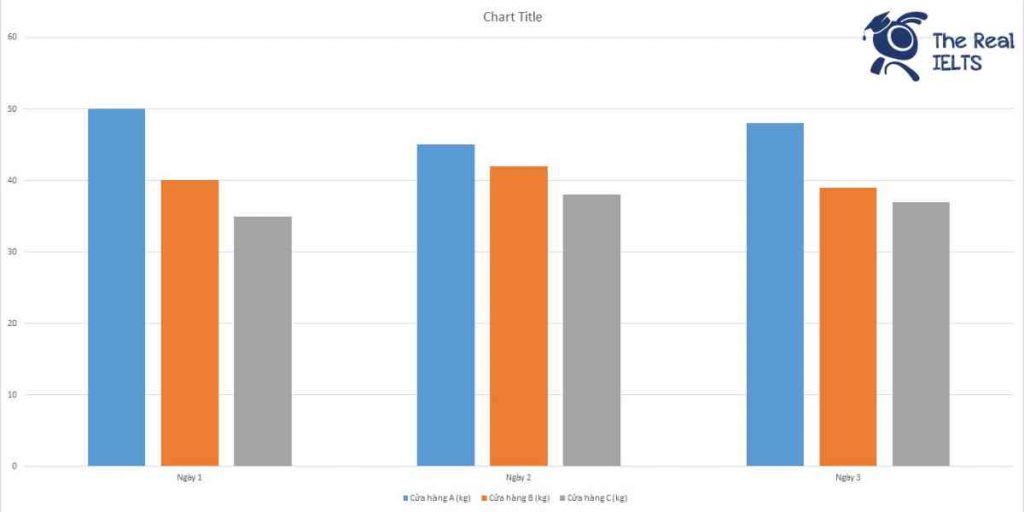

IELTS Writing Task 1 yêu cầu bạn mô tả biểu đồ bar chart về lượng tiêu thụ bột giặt trong 3 ngày của 3 cửa hàng khác nhau.
IELTS Writing Task 1 Bar Chart: Flu Infection
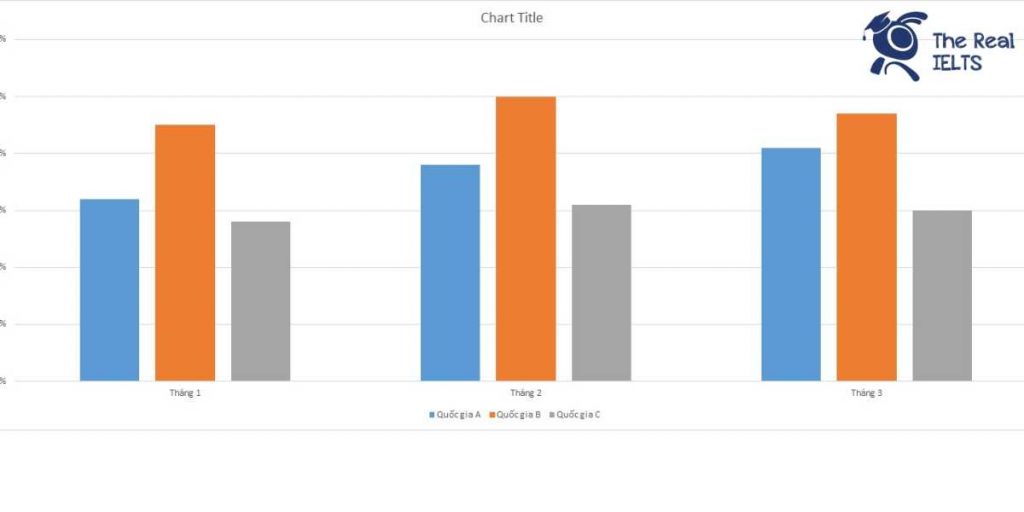

Bài IELTS Writing Task 1 Bar Chart: Flu Infection sẽ có biểu đồ cột so sánh tỷ lệ mắc bệnh cúm trong 3 tháng ở 3 quốc gia châu Âu. Dữ liệu cho thấy sự khác biệt rõ rệt về tỷ lệ mắc bệnh giữa các quốc gia trong từng tháng, với một số quốc gia ghi nhận tỷ lệ cao hơn trong các tháng mùa đông, cho thấy ảnh hưởng của thời tiết và yếu tố môi trường. Đọc bài này Cách làm bài IELTS Writing Task 1 Bar Chart trước khi làm bài. Bạn cũng có thể đọc lại bài nói về Task 1 tại đây: IELTS Writing Task 1 cần lưu ý những gì? Đọc thêm về xây dựng lộ trình học IELTS của The Real IELTS. IELTS Writing Task 1 Bar Chart: Flu Infection You should spent about 20 mintutes on this task The bar chart compares the flu infection rates over three months in three European countries. The data reveals significant differences in infection rates between countries each month, with some countries recording higher rates during the winter months, indicating the impact of weather and environmental factors. You should write at least 150 words. Tháng/Nước Quốc gia A Quốc gia B Quốc gia C Tháng 1 3.2% 4.5% 2.8% Tháng 2 3.8% 5.0% 3.1% Tháng 3 4.1% 4.7% 3.0% IELTS Writing 1 Overview The table illustrates the influenza infection rates over a span of three months in three European countries: Country A, Country B, and Country C. The data captures the percentage of the population affected by influenza in January, February, and March. This information is crucial for understanding the seasonal trends and the relative impact of influenza across different regions. Body 1 In January, the infection rates were relatively low across all three countries. Country A reported an infection rate of 3.2%, Country B had the highest rate at 4.5%, and Country C had the lowest rate at 2.8%. This indicates that during the start of the year, influenza was most prevalent in Country B, whereas Country C experienced the least impact. Body 2 As the months progressed, the infection rates showed a noticeable increase. In February, Country A saw a rise to 3.8%, Country B’s rate climbed to 5.0%, and Country C increased slightly to 3.1%. By March, Country A’s infection rate reached 4.1%, Country B’s rate slightly decreased to 4.7%, and Country C’s rate decreased to 3.0%. This trend highlights a peak in February for Country B, while Country A continued to see an increasing trend, and Country C’s rates remained relatively stable with minor fluctuations. In summary, the influenza infection rates varied across the three countries, with Country B generally experiencing higher rates compared to the other two. The data reflects the dynamic nature of influenza spread and emphasizes the importance of monitoring and preparedness in managing public health. IELTS Writing 2 Overview The statistics provided represent the influenza infection rates over three months in three European countries: Country A, Country B, and Country C. This data illustrates the fluctuation in infection rates from January to March, offering insights into the seasonal impact and the differences between the nations in terms of influenza prevalence. Body 1 In January, the infection rates were 3.2% for Country A, 4.5% for Country B, and 2.8% for Country C. Country B had the highest rate of influenza infections, while Country C had the lowest. This could be attributed to various factors such as differences in healthcare infrastructure, population density, or public health policies. Body 2 February saw a general increase in infection rates across all three countries. Country A’s rate rose to 3.8%, Country B’s to 5.0%, and Country C’s to 3.1%. This increase might indicate the peak of the flu season, suggesting that more aggressive measures might be needed during this time to control the spread of the virus. Body 3 In March, Country A reported an infection rate of 4.1%, Country B’s rate slightly decreased to 4.7%, and Country C had a minor decrease to 3.0%. The data suggests that while the infection rates in Countries B and C began to stabilize, Country A continued to experience a rise. This trend could be analyzed to understand the efficacy of interventions and the natural progression of the flu season in different regions.
IELTS Writing Task 1 Bar Chart: Divorce Applications
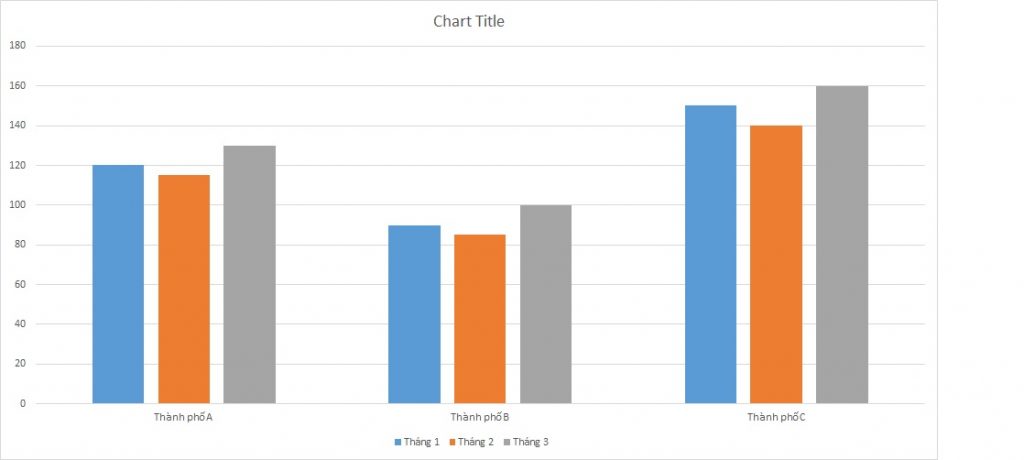

IELTS Writing Task 1 yêu cầu mô tả biểu đồ cột về số lượng đơn xin ly dị trong 3 tháng của ba thành phố.





